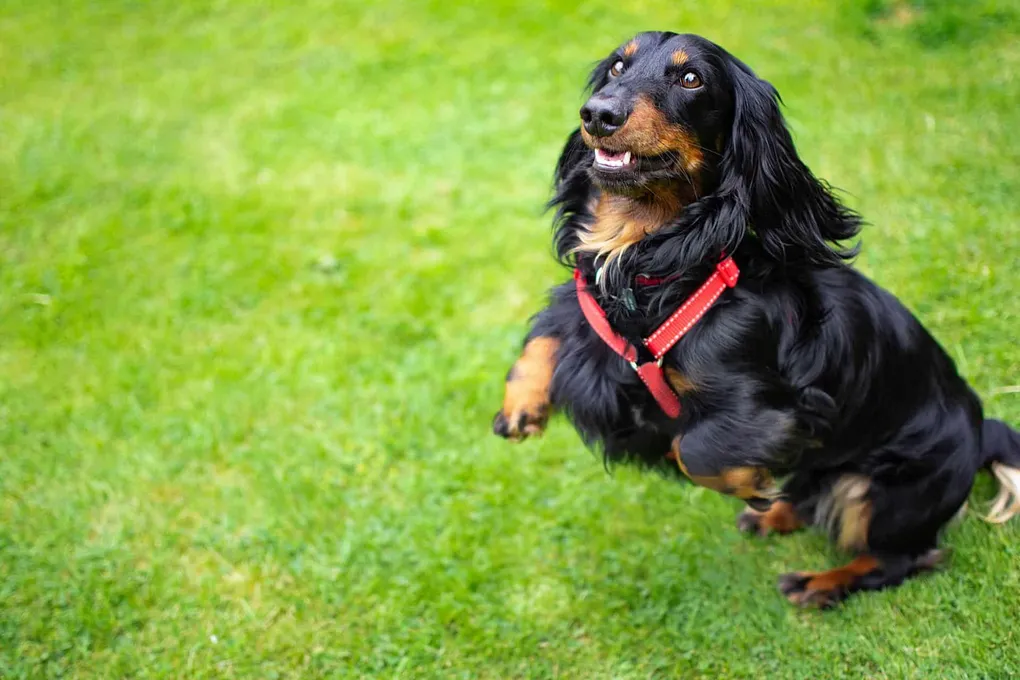
Dogs are such charming pets. They always aim to please. In their eagerness, they often jump up and down on family members to show it. While this may just be a sign of their excitement, it can become quite problematic if they do it publicly and with other people. This is why it is essential to train your dog not to jump when uncalled for.
In this blog post, we’ll share with you how to train your dog not to jump. But before we get on with the hows, let us first understand the whys of this unwanted behavior.
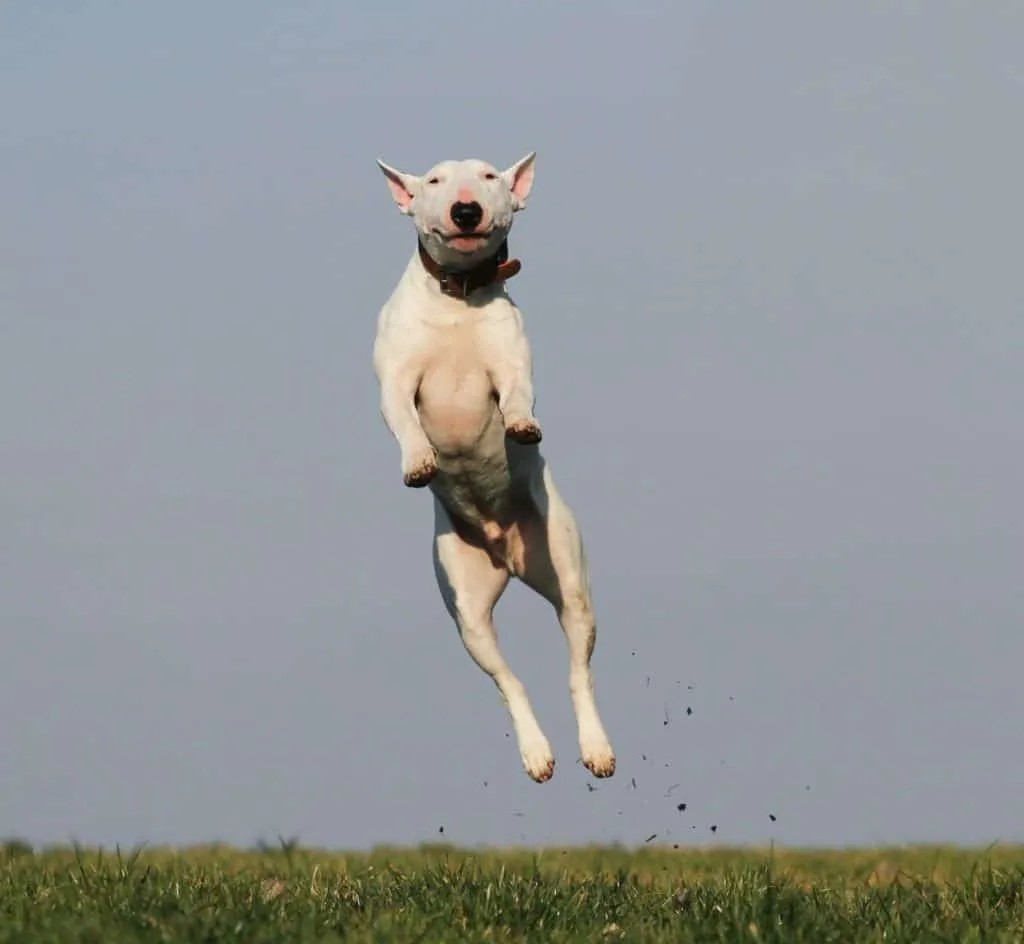
Why do Dogs Jump on You?
It is said that it is normal dog behavior for dogs to jump. Most dogs, on instinct, will jump on people unless they are trained to do otherwise.
There are several reasons presented by pet behavior specialists why a dog jumps.
A Sign of Affection
Most dogs jump as a sign of greeting people, their way of saying hello. Your dog is just overly excited that you are home, and your dog cannot manage this over-excitement. Your dog expressly shows this by jumping on you.
Dogs also jump up on people to try to reach and lick their faces as a sign of affection. Since people are way taller than dogs, an adult dog would have to jump up to show this affection.
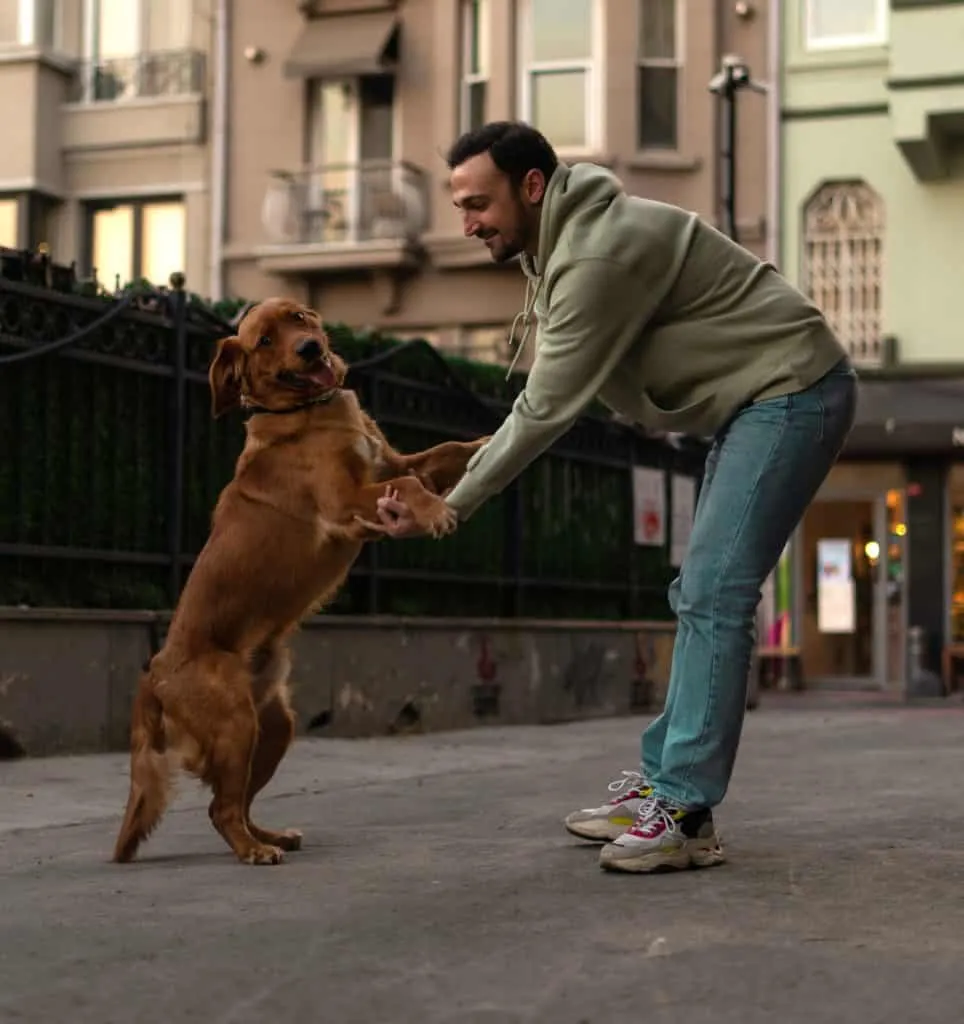
Asking for Food
During their puppy days, dogs are excited to see their pet parents bringing food. A new puppy would jump up to try to reach his pet parent’s face as a sign that they want food.
Eventually, this behavior is adopted by the puppies as they grow older. It has become a natural reaction for them. When they see us bringing food, they usually jump on us. It is their way of communicating that we ought to put food on their plates now.
Show Control
Some dogs jump on other people when they are stressed or when they lack confidence in the presence of unfamiliar faces. This dog-jumping behavior is their way of manifesting that they are the “boss.” It is their way of showing that they are the ones in control.
Spend Off Energy
Some dog breeds jump up and down to show that they want to go outdoors as they need to spend their pent-up energy. It is a signal for you to bring them outside to do their exercises.
A dog kept indoors or inside a dog crate or on a leash for too long gets bored and becomes restless. The feeling of necessity to go outside is overwhelming, and they jump to tell you that it is time. Just like humans, they need to spend some time outdoors.
Sign of Attack
A jumping dog may also be a sign that it is ready to attack. In the presence of strangers and other dogs, some dogs jump to convey the message to keep off and stay away. It might also be an instant reaction of a dog when he is being attacked or threatened.
While this may be a natural reaction, it would be advisable to teach your dog to stop jumping and attacking for no reason at all. In fact, it is really dangerous if you have a dog jumping and attacking all the time. It can cause you a lot of trouble. Other people will get scared. They might be bitten or injured by your dog. It can result in strained relations within the neighborhood, and other people would feel frightened upon seeing your dog.
Eventually, your dog might feel like an outcast from society, which could develop into other behavioral problems.
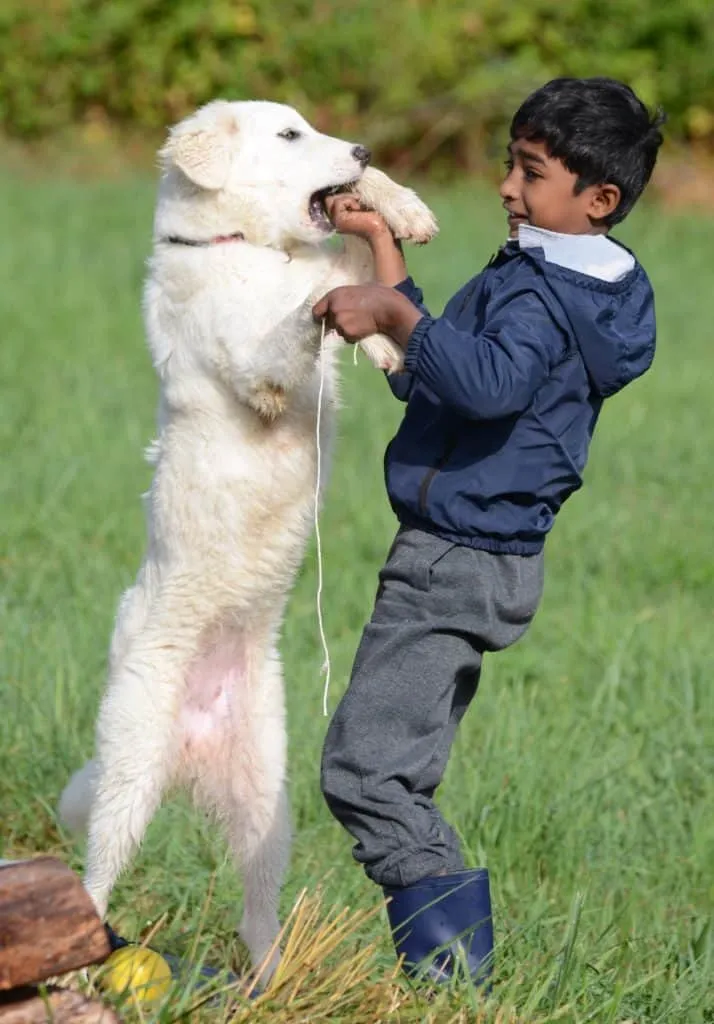
Why Stop your Dog from Jumping?
This jumping behavior of dogs is sometimes seen as annoying by some people. Imagine yourself dressed up and about to go to the office or to a party, and your dog suddenly jumps on you. Your suit or dress gets torn or dirty. It can be quite frustrating and irritating.
A dog who always jumps might actually be dangerous for people who easily lose balance and are not steady on their feet. It can cause children to topple down and may result in injuries. Elderly and frail individuals might fall down and cause damage to their bodies.
How to Train A Dog Not to Jump
Now that we know why dogs jump, we can learn how to train dogs not to jump and how to manage this jumping behavior.
Puppy Socialization Classes
Enroll your dog in early socialization classes or puppy kindergarten classes. These classes teach puppies how to behave in public and when in the presence of strangers and other dogs.
Alternate Behavior
You can train your dog from jumping on people when you get home or when visitors arrive at your front door by telling your dog to “sit” or “stay” once he starts jumping. Once he obeys, pay him some attention and give him a reward or a treat.
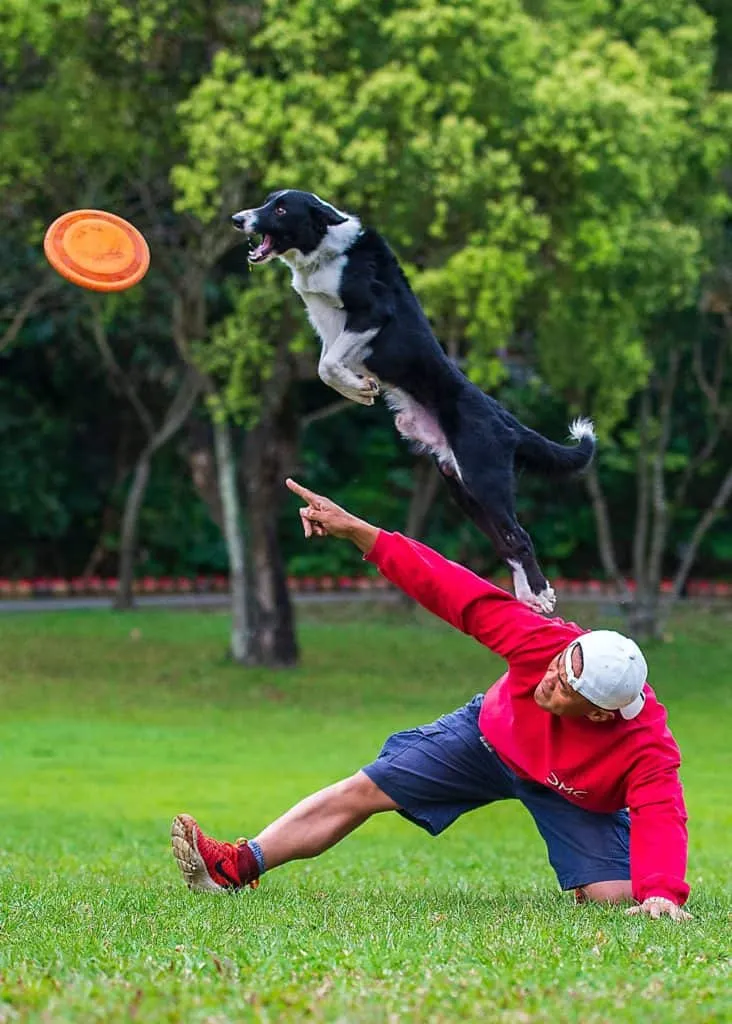
If he is not trained to “sit” and “stay,” once he starts to jump, you can totally disregard him and pay him no attention. It is also suggested that once your dog starts jumping on you, go out of the door and try to re-enter again. Continue doing this until your dog realizes you do not want to be jumped upon when entering the door.
You can also try to put him on a leash or a crate. Once you enter the door, they will try to jump up on you but will not be able to reach you. Wait until they settle down or have stopped jumping before giving them attention.
By doing all of these, your dog learns that not acting the same way as before would be a more appreciated way to greet people. Always remember to reward good behavior.
The General Rule
Every time your dog jumps, whether to greet you, ask for food, establish control, or due to some pent-up energy, do not give them positive attention. Giving the slightest attention would be seen as a reward for jumping. And your dog will keep jumping to gain that positive attention.
At the same time, avoid giving your dog negative attention, such as trying to push him away. By doing so, you will be touching him. Touching him in any way might be perceived by your dog as a positive reinforcement, and he will be encouraged to do the same next time.
If you notice that your dog’s jumping habit is only occasionally, divert your dog’s attention and prevent jumping by engaging him in training sessions or playtime. During these dog training sessions, encourage jumping to teach your dog that jumping is not done indiscriminately. Dogs learn that jumping is a desired behavior that would earn them a treat only in certain circumstances.
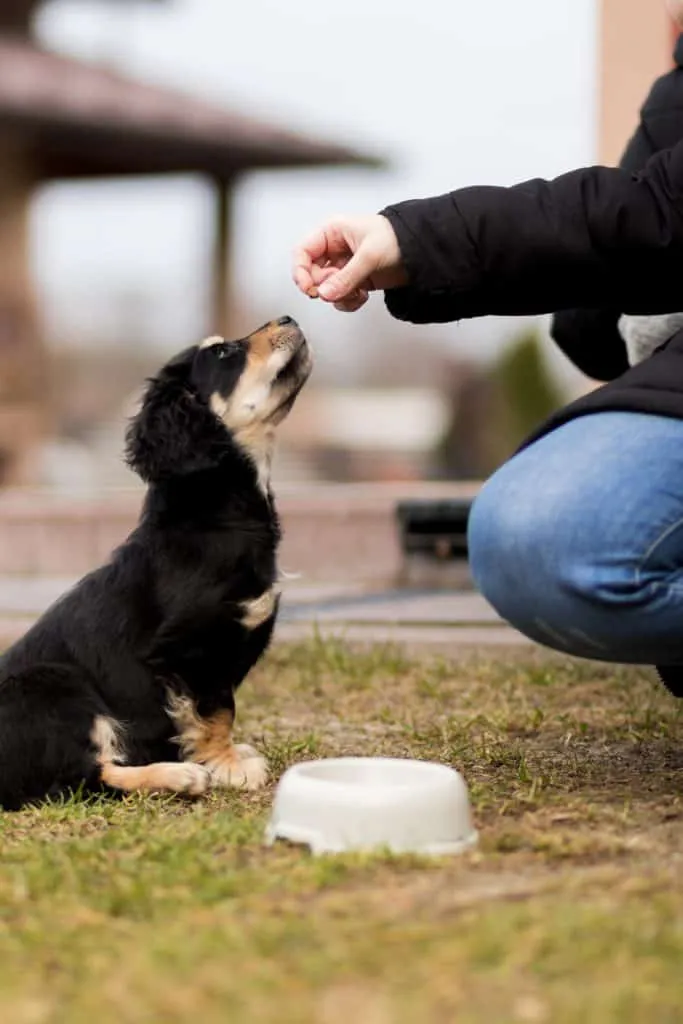
“Sit,” “Stay”
It is also advisable to teach dogs the basics like “sit” and “stay.” It is important that your dog understands when to “sit” and “stay,” as it will help you train your dog not to jump. Once your dog abides to “sit” or “stay,” you can easily train him not to jump.
Finally, do not talk to your dog while he is jumping. Conversing with your dog while he is still jumping (except when it is to give them commands like “sit” or “stay”) will also be taken by them as a reward. They would think that they are being rewarded with attention for jumping.
The Four On The Floor Rule
There is a basic rule on dog training to help counter this behavior --- the Four on the Floor Rule.
This rule requires a dog to remain with all four paws on the floor. Train your dog to keep all paws on the floor. Every time he removes a paw from the floor, do not pay him attention and totally disregard him. And each time he has all paws on the floor, encourage this behavior by giving him a treat or a pat as a reward as part of his positive reinforcement training.
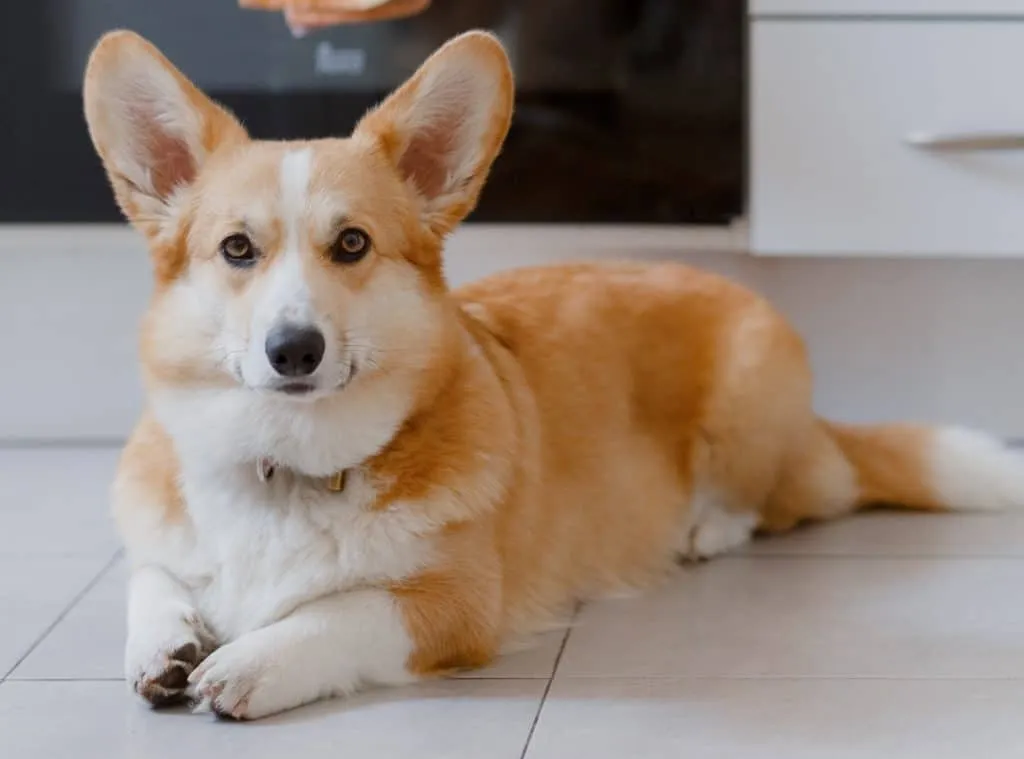
Some Things to Remember
Training dogs not to jump might be a hard task for anybody. But consistency and patience are the keys.
Be consistent. Never divert from your training method in case you send mixed signals and your dog develops incompatible behaviors. Always remember to reward your dog with positive reinforcement (a pat, some dog treats, or his favorite toy) every time he obeys you.
Be patient. As an old saying goes, “you cannot teach old dogs new tricks.” So, start training your dog not to jump while he is young. Puppies tend to learn quickly compared with older dogs. Continue your training techniques until he learns his “new trick.”
For extreme dog leaping, it is advisable to consult with pet behavior specialists or engage the help of professional dog trainers.